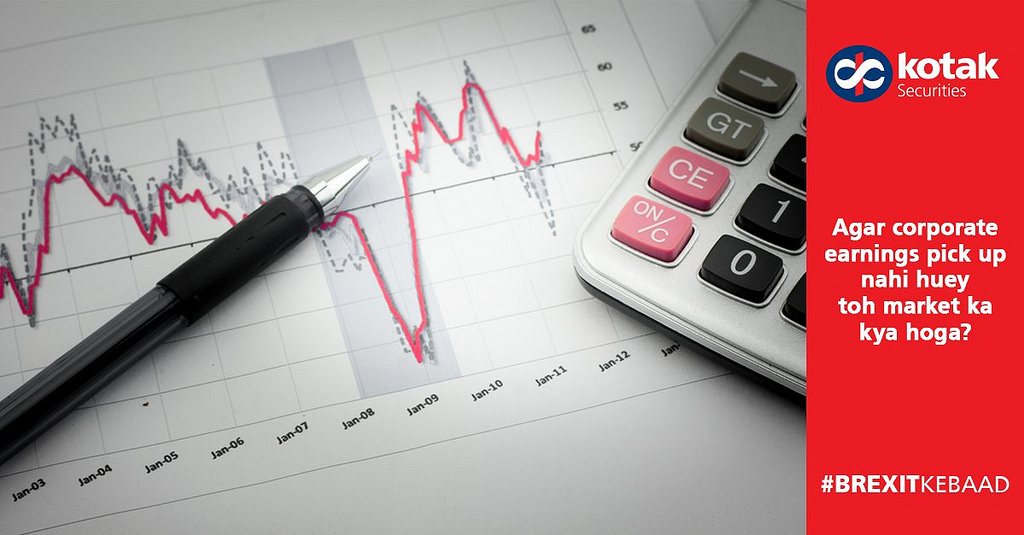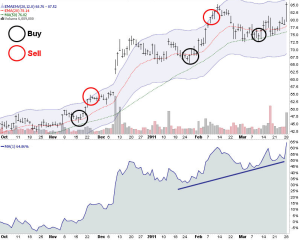Swing Trading Strategies
Kotak Securities is one of India’s share broking firm offering demat accounts, mutual fund and IPO investing service’s along with a research division specializing in Sectoral research and Company Specific Equity Research.
Express your views on their Facebook Page and Twitter Handle (@KotakSecurities) or you can also visit KotakSecurities.com for more information.

Kotak Securities provides a detailed analysis of Swing Trading used in Stock Market Investing
Introduction: There are many ways or methods of trading in stock markets and one of them is swing trading. Swing trading is a style of trading stocks that attempts to capture short term moves in the stock market. In its simplest form, swing trading is basically repeatedly buying and selling of stocks near the up or down price swings caused by price volatility.
A swing trader typically holds a stock for 2 to 5 days. This time frame is also unique in which you can potentially capture explosive moves in a stock in a very short period of time.
How does swing trading works: Stock prices never move in a straight line and anyone who’s been watching the stock market over the past few years knows that the market moves in trends. And swing trading allows you to take advantage of these trends.
Swing trading allows you to trade stocks whether the market is moving up, moving down, or moving side to side. In a market that’s moving up, swing trading will help you catch the big move when stocks that have pulled back rally into strength. In a market that’s moving down, swing trading will help you catch the reversal when a stock has bounced too far too fast and is ripe for a retreat.
And in sideways markets, swing trading will help you do both, catching both the big moves and the reversals as the market moves back and forth in its range.
Swing trading is suited to whom: Swing trading is ideal for independent traders because unlike day trading you don’t have to be glued to your screen all day making hundreds of trades. With just a few trades a week, a few minutes a day, swing trading puts your money to work when there are real opportunities in the market.
How it is different from other trading styles: In reality, swing trading sits in the middle of the continuum between day trading to trend trading. A day trader will hold a stock anywhere from a few seconds to a few hours but never more than a day and a trend trader examines the long-term fundamental trends of a stock or index, and may hold the stock for a few weeks or months.
Swing traders hold a particular stock for a period of time, generally a few days or two or three weeks, which is between those extremes, and they will trade the stock on the basis of its intra-week or intra-month oscillations between optimism and pessimism.
Swing trading VS Day Trading
Unlike day traders, swing traders hold positions over several days and sometimes for a few weeks. But similar to day traders, swing traders rely heavily on signals from chart patterns and technical indicators to time their entries and exits from securities. The goal of swing trading is to profit from short but powerful moves of the stock market
Swing trading VS Long term investments
Swing trading also differs from the buy-and-hold approach to investing. Long-term investors may hold a security through periods of weakness that may last several weeks or months, hoping that the tide will eventually turn and their investment decision will be proven correct.
Swing traders don’t care for such poor performance in the near term. If a security’s price is performing poorly, swing traders exit first and ask questions later.
How to use swing trading: Strongly trending stocks often make a quick move after completing its correction from which one can profit from. Hence, the basic strategy of Swing Trading is to jump into a strongly trending stock after its period of consolidation or correction is complete.
You can then sell the stock after 2 to 15 days for a 5%-20% move. This process can be repeated over and over again. You can also play the short side by shorting stocks that fall through support levels.
Identifying the right Stock:
The first key to successful swing trading is picking the right stocks. The best candidates are large-cap stocks that are among the most actively traded stocks on the major exchanges. In an active market, these stocks will swing between broadly defined high and low extremes, and the swing trader will ride the wave in one direction for a couple of days or weeks only to switch to the opposite side of the trade when the stock reverses direction.
The right market:
It should be noted that in either of the two market extremes, the bear-market environment or raging bull market, swing trading proves to be a rather different challenge than in a market that is between these two extremes. In these extremes, even the most active stocks will not exhibit the same up-and-down oscillations that they would when indexes are relatively stable for a few weeks or months.
In a bear market or a raging bull market, momentum will generally carry stocks for a long period of time in one direction only, thereby confirming that the best strategy is to trade on the basis of the longer-term directional trend.
The swing trader, therefore, is best positioned when markets are going nowhere – when indexes rise for a couple of days and then decline for the next few days only to repeat the same general pattern again and again.
A couple of months might pass with major stocks and indexes roughly the same as their original levels, but the swing trader has had many opportunities to catch the short-term movements up and down (sometimes within a channel).
Of course, the problem with both swing trading and long-term trend trading is that success is based on correctly identifying what type of market is currently being experienced.
Advantages of swing trading: Swing trading combines the best of two worlds — the slower pace of investing and the increased potential gains of day trading. Swing Trading works well for part-time traders — especially those doing it while at work.
While day traders typically have to stay glued to their computers for hours at a time, feverishly watching minute-to-minute changes in quotes, swing trading doesn’t require that type of focus and dedication. While Day Traders gamble on stocks popping or falling by fractions of points, Swing Traders try to ride “swings” in the market.
Swing Traders buy fewer stocks and aim for bigger gains; they pay lower brokerage and, theoretically, have a better chance of earning larger gains. To swing trade, you don’t need sophisticated computer hook-ups or lightning quick execution services and you don’t have to play extremely volatile stocks.
Dos and Don’ts of Swing trading:
- Admit to losses when they occur: Markets have a way of humbling even the most skilled traders if they let their egos get in the way of their trading. Some traders hold onto losing positions in the hopes that they can eventually break even — a policy that devastates an account in the long run.
- Try to insulate yourself as much as possible from others’ opinions, whether the person is your ‘childhood friend’ or a Dalal Street analyst. Remember, Dalal Street is a community, and analysts send out their opinion reports to hundreds, if not thousands, of traders and portfolio managers. Reading those reports can lead you to think like the analyst does — and like hundreds of others do. Good performance doesn’t come by copying what everyone else is doing.
- Don’t frequent message boards: Message boards often foster a group mentality that a position should behave a certain way. You don’t want to gather knowledge from just anyone on the Internet. Rather, stick to trusted sources and form your own opinion on matters
Risks involved: Risks in swing trading are commensurate with market speculation in general. Risk of loss in swing trading typically increases in a trading range, or sideways price movement, as compared to a bull market or bear market that is clearly moving in a specific direction.
Conclusion: Swing trading is actually one of the best trading styles for the beginning trader to get his or her feet wet, but it still offers significant profit potential for intermediate and advanced traders. Swing traders receive sufficient feedback on their trades after a couple of days to keep them motivated, but their long and short positions of several days are of the duration that does not lead to distraction.
By contrast, trend trading offers greater profit potential if a trader is able to catch a major market trend of weeks or months, but few are the traders with sufficient discipline to hold a position for that period of time without getting distracted. On the other hand, trading dozens of stocks per day (day trading) may just prove too great a white-knuckle ride for some, making swing trading the perfect medium between the extremes.
Illustration:
Swing trading can be done with the help of many technical analysis techniques. Some traders use various candlestick patterns while some use moving averages and momentum indicators. It totally depends on the trader what techniques he is comfortable with.
In the chart shown below moving averages are used to identify trend, moving average envelopes are used to indicate the areas of “maximum optimism” and relative strength indicator is used to measure momentum.

It can be seen in the chart that in the last five months, the above stock has offered three swing opportunities, where the stock pulled back to its 20 day moving average while relative strength was rising( end of November, end of January and at the beginning of March). The sell points were also clear from the chart when the prices touched the upper channel boundary, it was time to sell.
Remember, swing trading means to “buy the dip and sell the rip” but it is always advisable not to buy at the first bounce and wait for a successful re-test of the swing low.

















